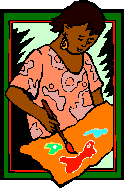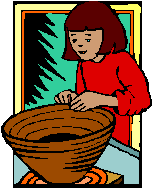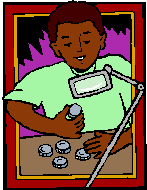| Demonstration Speech |
|


|
|
Organization: Organize the steps in your process chronologically. These will become the body of the speech. |
|
|
|
|
|
Conclusion:
This must include the following: |
|
| Outline: This will be a separate grade. (100 points possible) You must use complete sentences. Each point must be in parallel structure. Neatness, spelling, and correct grammar are important. | |
| Visual
Aid(s): At
least one visual aid is necessary to help explain and illustrate the
process you are demonstrating. Visual aids must be something in addition
to both the materials you use in your demonstration and your finished
product. The visual aids may be posters and/or audio-visual (including
PowerPoint). They will be graded on content, preparation, neatness, and
use. They will be graded separately from the speech. (75 points possible)
Be sure to practice your speech using your visual aids. |
|
| Practice:
Be sure what you are doing will be visible to everyone in the
audience. Explain each step clearly as you demonstrate. Avoid "dead
air" time. Your goal is to do such a good job that the audience can
duplicate the process and produce the product after you have finished. It
is important to time your speech more than once to make certain it fits
the given time frame. |
|
Materials: Organize your materials. Create a checklist of all the items you will need to successfully complete your process. Arrange for storage of perishable food items ahead of time. Be sure you have a plan to get your materials to and from class on the day you will speak. |
|
Presentation: Your actual speech will count 200 points. We will draw ahead of time for speaking order. You will lose 20 points if you do not speak in your assigned time. During your speech, make sure everyone can see all the steps of your process. Pay close attention to the timer. Monitor feedback to determine audience understanding. |
|
| Clean up: This is part of your responsibility as a speaker. Bring paper towels or a cloth to clean off the table if you will potentially make a mess. | |
| Afterwards: Take home your materials!!! | |
| Topic
Ideas: Only 1 person per class may speak on a topic. Here are a
few of the topics used successfully in the past to get you started
thinking. Of course you are not limited to these ideas.
How to: |



